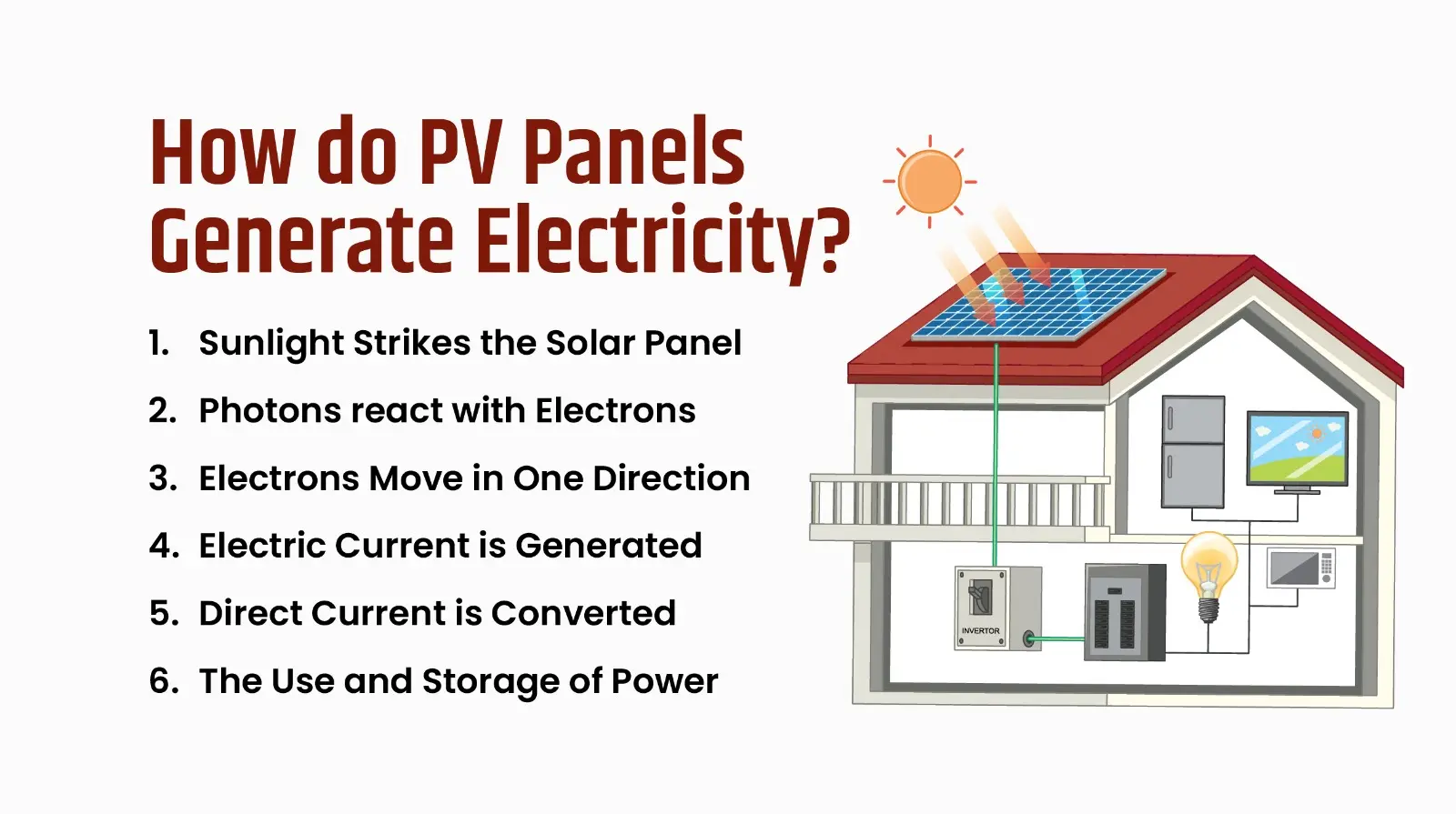How Photovoltaic Panels Create Power
Who would have believed that it would be this easy to utilize the energy of sunlight to generate electricity? Technology has been leading the world towards sustainability. Thanks to it, we now have amazing solar panels. These panels use the sunlight in the best possible way, which also helps the environment. You already know that solar power helps in heating water, cooking, and heating & cooling with the help of solar panels. But when it comes to electricity generation, photovoltaic panels enter the picture. These incredible pieces of technology are very effective in generating energy for our daily use.
It's obvious that you now think about how these panels actually create electricity. The seemingly magical phenomenon is aided by these photovoltaic panels or solar panels. Below in the blog, we will go into detail about it. One thing to note is that solar panels is a generic term that refers to all kinds of panels, like solar thermal panels or PV panels. So, yes, there's a slight difference between solar panels and photovoltaic panels.
What are Photovoltaic Panels?
Photovoltaic panels can be called the heart of this whole system. This is the site of energy conversion, from the sun's rays to electricity running the appliances in your homes. These PV panels are constructed of many solar cells put together. These solar cells are made of a semiconductor material that is responsible for the whole functioning. These cells generate electricity in a manner that is efficient and non-damaging to the environment.
What are the Key Components of Photovoltaic Panels
Solar Cells
Solar cells are one of the most important components in a PV panel. These cells are responsible for the energy conversion. Usually made of silicon, they soak up the sunlight during the daytime. This generates an electric current. A PV panel contains many cells; it all depends on the size of the panel. To know more about them, read: How do solar cells work?
Glass cover
These panels need to be out in the open to collect the sunlight. This puts them at great risk of rain or damage from the extreme weather. So, we have a glass cover to protect them from any kind of damage without hampering the sunlight absorption.
Frame
As these panels go up on the rooftops and other structures, they need a support system to mount them safely. These frames are often made from aluminium and provide structural support.
Backsheet
The solar cells require protection from moisture and other environmental factors. The backsheet at the rear also provides insulation.
Junction Box
The junction box allows the current to flow out of the panels and into the inverter. Where the current is converted to usable electricity.
Now that you know about the components of a photovoltaic panel, let's look at how solar panels work.
How do PV Panels Generate Electricity?

You know what photovoltaic panels are by now. Now, the question is, how do these PV panels work to create power? The process of this is called the photovoltaic effect. Let's learn about it step by step.
1. Sunlight Strikes the Solar Panel
The process begins as soon as the installed solar panels come into contact with sunlight. The small packets of energy carried through the sun's rays strike these panels. Cells, made of silicon, a semiconductor material, then interact with these photons.
2. Photons react with Electrons
As soon as the photons react with the electrons in the solar cells, the energy is transferred to them. They get excited, and this causes a movement. Electrons, then, break free to move in a single direction.
3. Electrons Move in One Direction
Solar cells made of silicon have two layers present in them; one side is positively charged, and the other is negatively charged. The electric field created due to this pushes the electrons to move in one single direction. Their movement generates an electric current.
4. Electric Current is Generated
When the electrons move out of the photovoltaic panels and into an external circuit, the flow creates an electric current. This current is direct current (DC) electricity.
5. Direct Current is Converted
The direct current electricity that is generated is usually not used by homes and appliances. So, to make the electricity good for use, an inverter converts it into Alternating Current (AC) electricity.
6. The Use and Storage of Power
The AC electricity is used to power the appliances and homes. But solar panels produce electricity in large quantities, which cannot be utilized all at once. That is where on-grid and off-grid solar power systems help you out. The On-grid solar system returns the electricity to the grid (this makes you enjoy the benefit of net metering). An off-grid solar system comes with a battery backup to save electricity for future use.
Why Should You Use Photovoltaic Panels?
PV panels are one of the most significant systems of generating sustainable, renewable and cleaner energy. They conveniently transform the sunlight into usable electricity. What's better than using power that doesn't harm you and the environment? Many other advantages are accompanied by Photovoltaic Panels.
No Pollution
Solar Energy does not degrade the land and misuse water like other traditional power plants. They do not harm the environment.
Sustainable Energy
The production of electricity by solar panels leads to the emission of clean and greener energy. It is a renewable resource which limits the use of depleting resources like the fossil fuels.
Great Life Span
Solar panels, once installed, do not require any extraneous or heavy maintenance, just occasional cleaning and very minimal maintenance.
Reduced Electricity Bills
The Installation of solar panels in your home will make you energy independent. You will then not need to rely on the electricity companies. This will automatically lead to a reduction in electricity bills.
To learn about more benefits of photovoltaic panels or solar panels in general, read - Reasons why solar panels are beneficial.
Conclusion
Photovoltaic panels are extremely beneficial in generating electricity without any adverse effects on the environment. They are also useful for the betterment of the future and the creation of a safe environment. KLK Ventures ensures that you are provided with top-notch photovoltaic panels, which are infused with both technology and science. There are so many choices for you to select from; either way, you will be guaranteed only the best. With KLK Ventures, you can contribute to the greater good that is to enjoy green, pollution-free, sustainable energy.
FAQs
1. In what ways do Photovoltaic Panels work?
Photovoltaic panels involve turning sunlight into electricity that is effective for consumption. The process is known as the Photovoltaic effect.
2. What is the lifespan of Photovoltaic Panels?
Photovoltaic panels are totally worth every penny spent on them. They are durable for an average of 25 to 30 years and will serve you for all your invested time and resources.
3. How much electricity do Photovoltaic Panels generate?
The energy produced will rely heavily on what model and specification you chose to bring your home. Size and efficiency are the determining factors. For a rough idea, a PV Panel generally generates 250-400 watts of electricity in a single day.
4. What is the use of an inverter in a Solar System?
An inverter literally inverts the type of current generated. Solar panels typically produce direct current (DC) electricity that is largely unusable. Inverter changes this to Alternating Current (AC) electricity so that you can extract power for your homes, offices and more.
